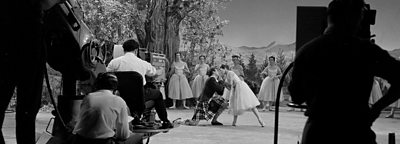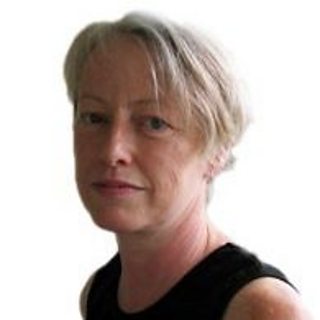Light Entertainment and Music in ±«Óãtv Television was a highly competitive world, but among its leading lights was a small group of highly influential women producers and directors. What do their wonderfully detailed oral history interviews reveal about their important role behind-the-scenes, and what it was like to work in these male dominated departments in the years after the Second World War?
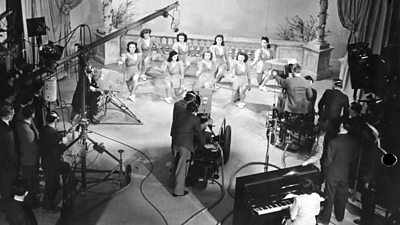
±«Óãtv Radio had been broadcasting variety programmes, comedy, music and jazz from the 1920s, and entertainment in the form of variety and music were at the heart of early experimental television prior to the Second World War.
Live television broadcast a whole range of variety programmes featuring well-known dance bands, popular singers and comedians, as well as live outside broadcasts and studio productions of ballet, opera and classical music, alongside its eagerly awaited live drama shows.
When television re-opened after the war in 1946, the ±«Óãtv created an all-encompassing Light Entertainment department to produce much of its music and variety, whilst also beginning in earnest to develop 'serious' television formats of Drama, Talks, and later News and Current Affairs.
Through experimenting, both in the innovation of television styles and in the invention of television engineering technologies, the ±«Óãtv established Light Entertainment as a staple of television before commercial television started in 1955.
Variety programming in the ±«Óãtv Television Service can be followed through the long and distinguished career of Yvonne Littlewood, who recorded her memories with the ±«Óãtv and the Broadcasting Entertainment History Project.
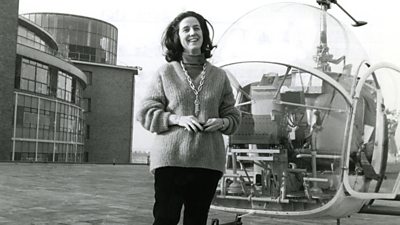
Yvonne Littlewood was one of the few women to work as a producer in Light Entertainment and, in the 1970s, was the only female producer in Variety alongside eighteen male producers. She enjoyed working in live broadcasting making popular television programmes and she brought many famous personalities and performers to the screen.
Littlewood learned her craft on the job. She first started working for the television service at Alexandra Palace in 1946 as a secretary, then became production secretary to Michael Mills in 1947. Mills was the first 'Light Entertainment producer' to be appointed, due to his experience of producing revues as entertainment for the troops in the Navy during the Second World War.
By 1948 Light Entertainment was set up as a television department, headed first by Pat Hillyard, then Ronnie Walden in 1952, and Eric Maschwitz in 1958.
Working with Mills for eight years, on variety programmes including Stars in Your Eyes, Variety Express, Saturday Night at the Palace, and Passing Show, "entertainment was the word," Littlewood recalls. Mills's ambitious productions brought the Lido cabaret from Paris, and there were many regular performers and guests, such as Geraldo and his Orchestra, Django Reinhardt, Stéphane Grappelli, and The Wendy Toye Ballyhoo. Littlewood assisted Mills in producing Pet's Parlour, featuring a young Petula Clark.
In the 1950s Littlewood worked with new directors Francis Essex and Stewart Morris, who pioneered some of the popular music programmes for teenagers and went on to have long careers in television light entertainment.
Bill Cotton, the son of the big band leader Billy Cotton, and later to become Head of Light Entertainment at the ±«Óãtv, recalls how Littlewood, as a production assistant, advised him how to shoot a live show, when he first joined the ±«Óãtv in the mid-1950s.
Cotton as a new producer had become completely confused in rehearsals for a forty-five minute set of Frank Chacksfield and his orchestra, whilst trying to cut between the orchestra and musicians in time to the music. She rescued him from making terrible mistakes during the broadcast by showing him how to manage it: "during tea, the two of us sat together with my camera-script and cut it so that it worked".
In this interview for the Broadcasting Entertainment History Project, Littlewood talks about her promotion from Producer's Secretary to Production Assistant:
Soon afterwards, in the late 1950s, Littlewood managed to make the difficult transition to Producer when Maschwitz sent her on the ±«Óãtv Television Training course in production. Once she obtained the qualification she was an apprentice and she directed her first show, Soft Lights and Sweet Music in 1960, while still a Production Assistant.
She got her real breakthrough as a Producer when ±«Óãtv Two started in 1964. She directed a number of shows with Duke Ellington and his orchestra for a new series, Jazz 625, and then with Oscar Peterson.
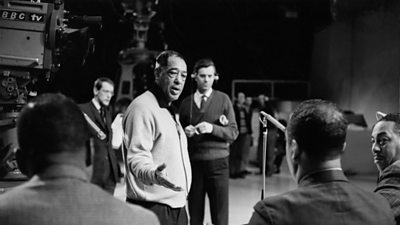
Littlewood brought folk singers, such as Peter, Paul and Mary, to the television studio for the series Tonight in Person. She was very successful with an outside broadcast filmed in Scotland, The Road to the Isles series with the singer Kenneth McKellar, who then starred in a follow up series recorded in locations across Europe.
She often travelled to New York for ±«Óãtv co-productions with American television, to bring US stars to British screens.
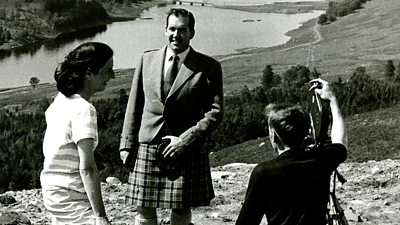
As a director she showcased invited artistes and singers, regulars such as Petula Clark, and visiting guests such as Harry Belafonte and Nat King Cole, and she also produced regular programmes around previously unknown performers. Nana Mouskouri was one of her successes, Val Doonican was another, in a show that lasted for over twenty years, from 1965 until 1986.
During the 1980s, in the series A World of Music, Yvonne Littlewood popularised many classical performers such as James Galway, Kiri Te Kanawa, John Williams, Jessye Norman and The King’s Singers.
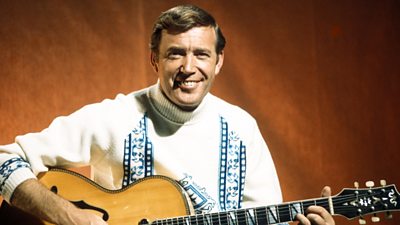
From early in her producing and directing career Littlewood also demonstrated her ability to produce large extravaganza shows, such as the annual Eurovision Song Contest 1963, the Royal Variety Performance, and Christmas galas. These complex and packed live broadcasts in peak time profiled a wide range of top singers, comedians, star performers and famous popular music bands, and drew large television audiences throughout the 1960s, 1970s and 1980s.
In a highly personal account newly released from the ±«Óãtv archives, Littlewood remembers the great atmosphere in the Lime Grove studios that inspired her to come up with programme ideas and work the long hours required:
Although Littlewood retired from the ±«Óãtv after receiving an MBE for her contribution to broadcasting in 1986, she continued working as a guest producer into the 1990s.
Music programming benefited enormously from three pioneering women directors who also moved into production in the 1950s, when they entered the new ±«Óãtv Television Training course in production.
Wendy Toye joined the ±«Óãtv as a Light Entertainment producer in 1951, and Paddy (Patricia) Foy and Margaret Dale joined the ±«Óãtv after commercial television began and many producers had left to work for ITV. They all played key roles in innovating music programmes and long-running series.
Paddy Foy, a trained musician, produced programmes on classical music, opera and dance, in series such as Music for You, The Profile of Music and Gala Performance, and she worked with Margot Fonteyn, Rudolph Nureyev, Jacqueline Du Pre, Placido Domingo, Yehudi Menuhin and Tito Gobbi, amongst other famous performers, many making their television debuts on Foy's programmes.
She collaborated closely with Margot Fonteyn over the years and together they made a very successful programme on the history of dance, Magic of Dance, (1976):
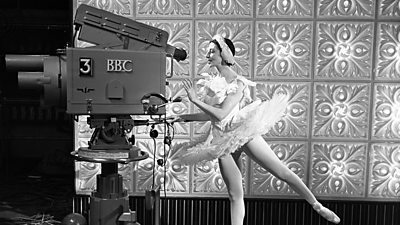
Margaret Dale was a very successful producer of dance. She appeared herself on television as a child dancer and was a member of the Royal Ballet Company before she was invited to take up training in production at the ±«Óãtv in 1954.
She became a key figure in the pioneering of televised ballet on the ±«Óãtv, although she indicated in her Broadcasting Entertainment History Project interview that being in the Music Department, instead of the Light Entertainment Department, inhibited her freedom to make the programmes she wanted to do:
During the 1960s the Music Department was separated from other music productions, first as the Music and Documentary Department, then as the Music and Arts Department.
The Music Department's preoccupation at this time with the problems of broadcasting music on television meant that ballet was largely not prioritised. Budgets were extremely low for live studio productions and outside broadcasts. As she recounts, this led Margaret Dale to move after a while into music documentary production, for the weekly arts programme Monitor, and later the documentary series Man Alive.
Wendy Toye, also a child prodigy in dance who appeared on John Logie Baird's early experimental television in the 1930s, worked on dance productions first for the ±«Óãtv and then Granada Television, alongside her prolific career as a cinema and theatre director.
Comedy had been separated from Variety under the Television Light Entertainment Group in the 1960s. Comedy began producing its own successful comedy formats with the development of sitcom and scripted comedy drama. Mills was Head of the Comedy Department from 1967 until 1972, an era which saw Dad's Army, Monty Python's Flying Circus, The Liver Birds, Some Mothers Do 'Ave 'Em and other comedy successes in the 1970s.
The first woman to become a producer in the Comedy Department was Susan Belbin, who joined the department in the 1980s and produced and directed comedy series, such as 'Allo 'Allo, Only Fools and Horses, Bread, and One Foot in the Grave, amongst others.
In this ±«Óãtv Radio Solent interview, Belbin recalls the start of her television career:
The 1980s were to witness a sea change in comedy and music programming with the coming of Channel 4, MTV and the transformation of the broadcasting environment.
Variety of the type produced by Yvonne Littlewood, and the televised ballet, dance and music pioneered by Margaret Dale, Paddy Foy and Wendy Toye, during the 1960s, 1970s and 1980s came to an end, but have left a lasting legacy in the broadcasting of arts on television.
